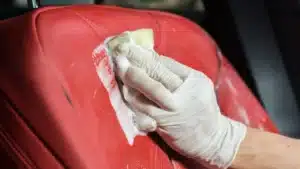It’s a lovely April afternoon. You park your car under a canopy of maple trees and return moments later to see a golden brown substance drying on your vehicle. Sounds familiar, doesn’t it?
For those who don’t know, the sticky amber-colored substance is not bird poop but most likely tree sap.
Tree sap can be detrimental to your car paint, especially if left on for long periods. Thus, we have provided a quick guide with actionable steps to teach you how to get tree sap off a car. Read on to learn how to handle this sticky situation when it arises.
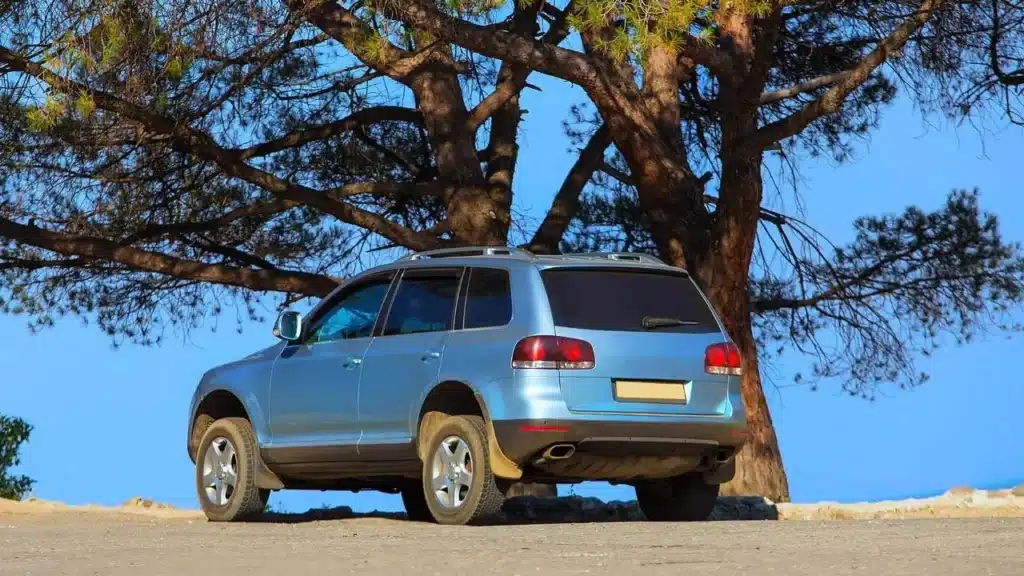
Tree Saps and their Impact on Car Paint
Tree sap actually has its benefits. Think of it as the tree’s “blood” transporting nutrients around the necessary parts. Sap from some trees are even edible, sugar maple being the most common example. The effect of physical damage, pests, and diseases causes the sap to leak out of the tree.
However, tree sap can be less friendly on your car’s paintwork. Like bird droppings and other overhead contaminants, tree sap is harmless and much easier to remove when fresh. The risk of damage increases as it dries and hardens on the car’s exterior.
Sap damages the vehicle paint by adhering to it. As the sap dries and shrinks, it creates tension on the paint job. The tension causes the paint coat to crack and peel, and eventually, rust sets in.
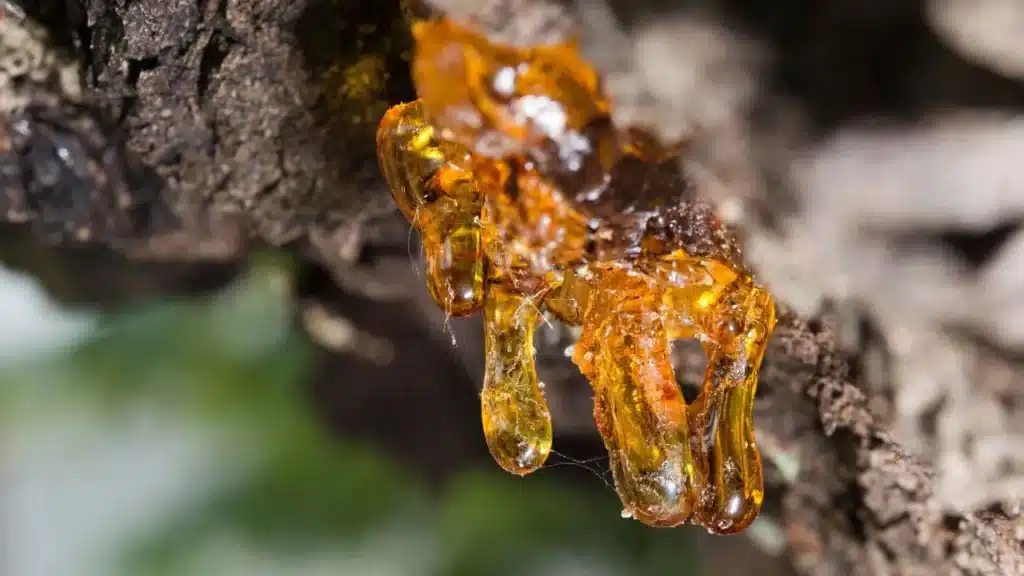
How to Remove Tree Sap from a Car Without Damaging the Paint?
Once the sap gets on your car paint, you have to get to work quickly. You can also use different substances for tree sap removal depending on how stubborn the stain is.
Before removing the sap from a car, you should wash it thoroughly, apply your sap removal substance of choice, and then gently wipe it off. This process is the same for whatever substance you use and will be detailed below.
To remove tree sap from your car, you will need the following essential materials:
- Automotive Wash Soap
- Microfiber Wash Mitt
- Microfiber Towel
- Goo Gone
- Acetone, Isopropyl alcohol, or Rubbing alcohol
- 2-in-1 scraper tool
1. Wash the car thoroughly

Washing the car first is a preparatory step that has its benefits. It helps you isolate and easily identify the affected areas. Washing also ensures you don’t rub the dirt deeper into your car’s paint job while trying to remove the sap. You can check our guide on how to wash your car like a pro here.
The next step is where the main work starts, and you’ll need all that elbow grease. We recommend gradually progressing from weaker to harsher substances when applying tree sap removers on your car’s exterior.
2. Try warm water and soap mixture
Start with warm water and soap. The previous washing should help you identify where to concentrate your efforts. Spray the sap spot with a soap and warm water mixture and rub gently but firmly with a microfiber towel (a soft cloth or non-abrasive scrub brush can also work). Rinse the spot off.
This method works best for sap that hasn’t bonded to the car paint. If not, it’s time for stronger measures.
3. Use specialized cleaning products
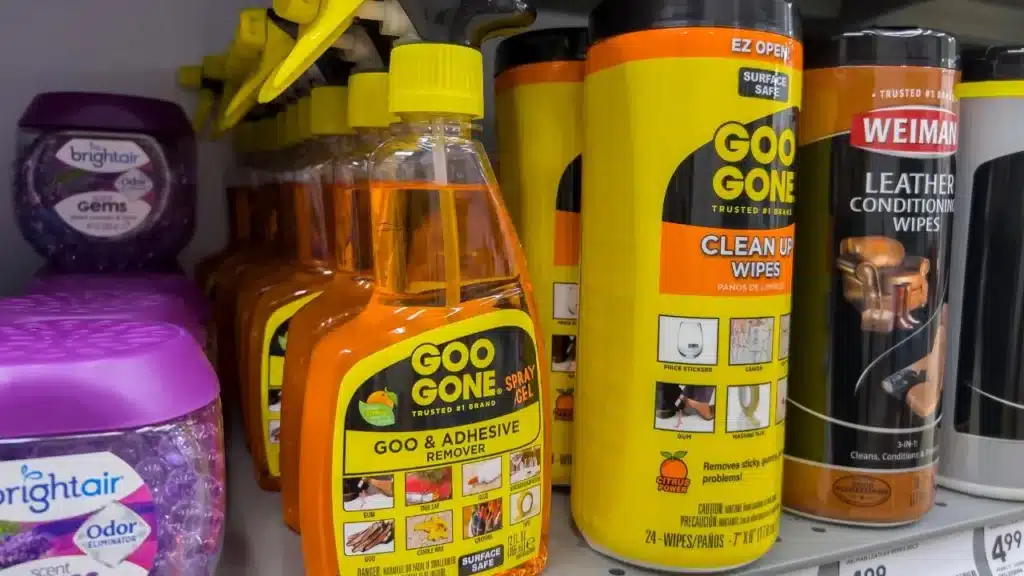
Several products on the market are specifically designed to safely remove tree sap, tar, and bird crud from your car paint. One popular option is Goo Gone. Apply the tree sap remover on the stain and leave it for a few seconds.
Gently rub the spot in circular motions with your microfiber cloth. You can also look at the packaging for extra instructions. Wash the spot again and rinse it with water. If this does not work, you may want to consider a stronger cleaning process like mineral spirit.
4. Try chemicals like acetone and isopropyl rubbing alcohol
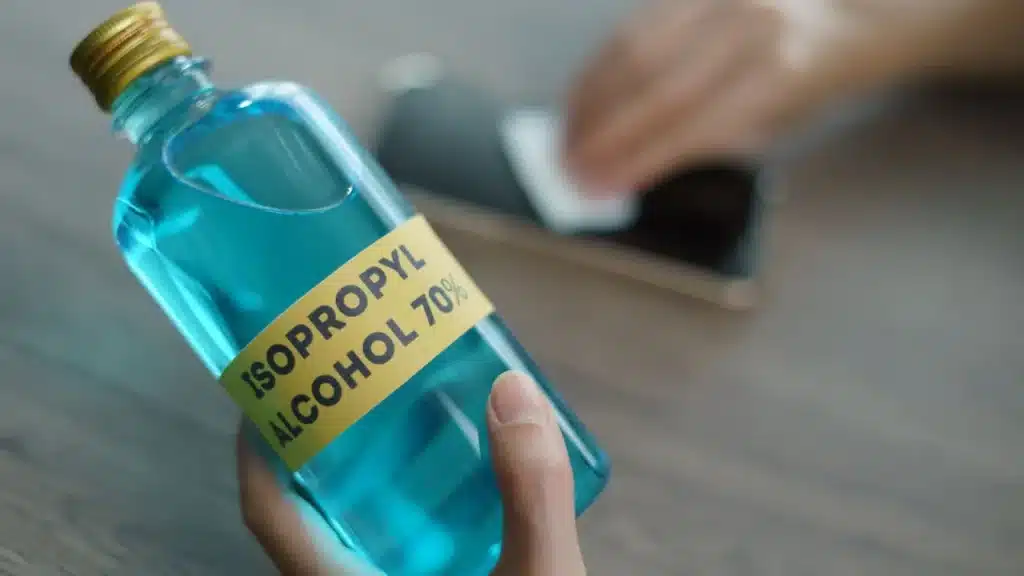
Based on our research, acetone, and isopropyl rubbing alcohol are the most effective substances you can use for a stubborn sap stain on your car.
Again, apply the chemical to affected areas, leave it on for a few seconds, and rub it with your microfiber cloth till the sap residue is no longer visible. You don’t want to use paper towels as they are slightly abrasive and can cause micro scratches on your vehicle’s paint.
Reportedly, acetone-based nail polish removers also work, and some users have reported success with it.
As a note, mind the concentration of the isopropyl in the rubbing alcohol you want to use. Around 70% isopropyl alcohol concentration is just right; anything higher can be too strong for your car’s paint.
Exposing your clear coat to harsh chemicals or commercial cleaner for an extended period increases its risk of damage. So, remember to work fast and rinse off each spot once you are done.
Here are some unlikely household substances that may work for removing sap from your car:
- Hand sanitizer: Cheap and common, a few drops of hand sanitizer work surprisingly well in removing tree sap residue. This is likely due to its alcohol content.
- Peanut butter and Mayonnaise: As crazy as it sounds, this bread spread can be used to remove tree sap, albeit to a very limited extent. Another crazy food option, it has a very limited ability to remove sap stains. The idea is that the oils in the peanut butter soften the sap, making it easier to wipe off.
5. Bonus tip: 2-in-1 scraper tool
You can use a 2-in-1 scraper tool for any residual sap after using methods 2 and 3. The scraper’s metal blade is strong enough to handle hardened tree sap, while the plastic blade is gentle enough to prevent scratches on your car’s paint or glass.
A detailing blade can also work. However, you have to be careful not to injure yourself or do extra damage to the paint finish.
What Next After Sap Removal?
Exposure to the harsh chemicals used for removing all the sap from your car can harm your clear coat, especially if left on for extended periods. There are certain post-sap removal steps processes that we often recommend to keep a car looking in pristine condition.
1. Polishing

Using a polishing compound removes any accidental damage your car paint may have experienced during sap removal (paint etching, “ghosting”). It also offers a degree of paint protection and keeps the car body looking shiny.
For windscreens and windows, you can use a reliable glass polish on the affected area.
2. Waxing
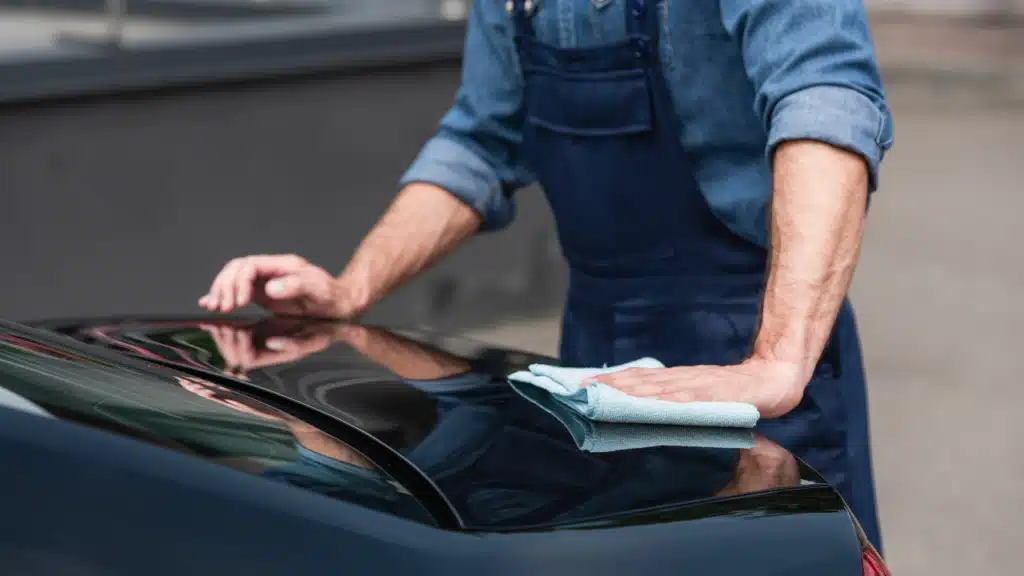
Applying a new layer of car wax after sap removal is another good practice. Not only does it cover up swirl marks and scratches and keep the car paint shiny, but it also offers a good paint protection layer that makes sap easier to clean next time.
Preventing tree sap damage to your car
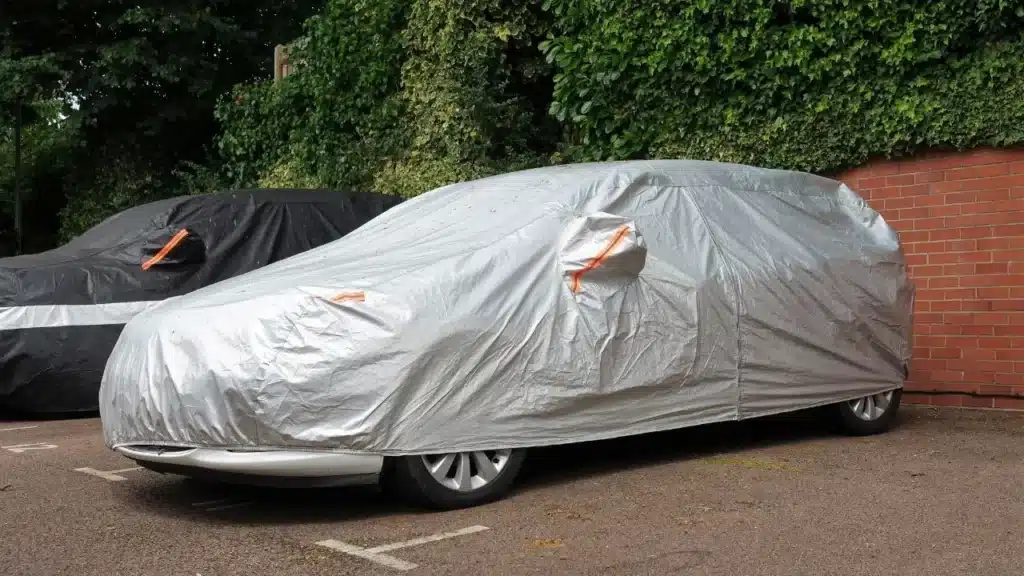
Knowing how to remove tree sap is fine and all, but it is better to avoid getting the resin on your car paint in the first place. Here’s a reminder to avoid parking under trees, especially in springtime. If that is unavoidable, you can also;
- Inspect your car very frequently so you can spot and remove any sap stain before it dries.
- Invest in a car cover or umbrella to protect it under trees.
- Wax your car regularly or use paint protection film.
- Prune the trees and apply pruning sealant to stop dripping from the tree.
FAQs
How long does it take for tree sap to damage car paint?
There is no specific time it takes for tree sap to start damaging your car paint. The damage occurs over time after the sap has dried and hardened.
Can hand sanitizers remove tree sap from cars?
Yes, they can. Hand sanitizers, especially those that contain alcohol, can be effective in removing tree sap stains from car exteriors. To do this, apply the sanitizer on the affected spot, let it sit for a minute, and then wipe gently with a microfiber cloth to remove pine sap.
Can Goo Gone remove tree sap from the car?
Yes, you can. Goo Gone is an adhesive cleaner. However, it is also strong enough to get rid of most sap stains. For this reason, many people often recommend it and other similar commercial cleaners to remove tree sap.
How long does it take to remove hardened sap from windshields?
With the right materials and patience, removing hardened tree sap from a car’s windows and windshields can take anywhere between a few minutes to just under an hour. We already covered what you’ll need above.
Conclusion
Following the instructions in this guide, you should know how to get tree sap off a car. Whether you opt for specialized cleaning products or rubbing alcohol, the key lies in taking prompt action and carefully applying the substances.
Remember, prevention is better than cure. Avoid parking under trees, especially during spring; if you can’t help it, consider investing in a car cover. This would prevent tree sap from getting on your car in the first place and save you a lot of hassle.
With careful protection and maintenance, you can preserve your car’s shiny, sap-free exterior for miles to come.


